The Webcomic Overlook #221: Gaia

At some point, I’m going to have to make peace with the fact that exposition is a very hard thing to do in high fantasy comics. It’s more natural in books, where characters can stop at the ruins of an ancient kingdom, then ponder the long elaborate history of Fantasy Magic Land while gathered around the fire eating roast oliphant. It’s actually pretty natural in video games, too. If you ever want to go more in depth into a world’s history, you can head over to the nearest abandoned dungeon which happens to have a fully stocked library regaling the history of Middle Landia.
Elaborating the history of a fantasy land in webcomic form, though, is more difficult. Sure, you can banish all the relevant stuff in a separate tab, but most of the time it functions in the same way an appendix works for a novel: it’s more or less ignored except for the diehards. If you try to do it the same way as the novels and have the characters spout exposition every time they see something culturally significant, it can seriously halter the pace of what is a visual medium. Out of webcomics, Order of Tales struck the balance between plot and exposition the best. The main character was a scribe, which gave the story a ready made excuse to switch to prose in order to flesh out the world’s background story.
In most webcomics, though, attempts to explain the backstory come off as rather forced. This is, unfortunately, what happens in Gaia, a comic by Sandra and Woo creators Oliver Knörzer (from Germany) and Powree (from Indonesia).

There is a scene where our hero, Ilias, is sidelined following a particularly heinous attack. While he’s convelescing, he decides to dig up some reading material. What he settles on is an essay he wrote in fifth grade. This essay goes into elaborate detail about the creation of Gaia. It also discusses the magic system, which is based on something called the Bluestream. It turns out it operates very much like Star Wars’ The Force. His entire essay is basically a cut and paste from the Gaia version of Wikipedia.
Let’s look at the ways this scene is awkward. First of all, this is way too unrealistic. Of all the things to read while recovering in bed, why an essay you wrote in fifth grade? Why not a magazine, or some light fiction? Second, there were less awkward ways to give this same history lesson. Why a fifth grade essay in particular? Why not a tome of “The History of Gaia”? Because, I’ll be honest with you, if I ever came across anything I wrote in the fifth grade, I would probably torch it. Encountering a tome would be far less ludicrous. Third, this is way too convenient from the standpoint of storytelling. There might as well be a scene where Ilias turns to the reader, winks, and says, “And now you know… the rest of the story.”
Fortunately, this is Gaia’s biggest weakness. The is about the only place the story drags. The rest of the comic is fairly economic storytelling that propels you from one scene to the next as the cast of characters is forced into tough situations that require snap judgment.

The story opens with three dudes obsessing over the same girl, the kind, sensible Lilith. (“Lili,” as she is known to her friends.) There’s Sandril, a brash hothead from a powerful family who’s the guy actually dating her. The second is Ryn, a pleasant, happy-go-lucky fellow who pretty much admits that Lili’s way out of his league. The third is our main hero, Ilias. He’s quiet, noble, gracious, and self-spoken.
The set-up seems to be the classic scenario where Ilias and Lili are clearly meant to be together. Now I’m not entirely sure. It turns out that Lili really is very much in love with Sandril. Also, despite his brash exterior, Sandril is actually a pretty awesome dude. A roguish Has Solo type, if you will. So breaking up those two seems very wrong.
Besides, it turns out Ilias has way more chemistry with two other female leads. There’s fellow student and archery adept Alissa, who joins up with him on awesome robot-themed adventures. Then there’s super thief Viviana, who seems to be coyly flirting with him. (At least, that’s how Powree draws her.) With Lili, it’s all unrequited pining, but with the other two there’s some derring-do and adventuring to be had. What I’m saying is, “Ilias, get over her, dude.”
We join the characters as they enter their final exam. This being a magical fantasy world, this exam does not involve fill-in-the-choice scantrons or 500-word, double spaced essays. Nope, these exams are more awesome in nature. They involve using your physical strength to beat some golems. Or exhibiting your magic mastery in a room full of spells. Lili proves to be particularly genius in the latter, by confidently combining untested spells in such a novel manner that she scores 15 out of 10 points.

Her triumph, though, is overshadowed. At the graduation ceremony, which is infiltrated by masked assassins, who kill several faculty and students. Worse, eyewitness testimony claims that Lili was a conspirator. She is found guilty and sentenced to death. The entire country of Cania turns on her and labels her a traitor.
Her friends, though, don’t believe a word of it, and they turn to desperate measures to save her life. The enlist the help of the Shadowdancers, master thieves led by the young cat burglar Viviana. Their organization is complex: while they cop to thievery, they take offense in being called kidnappers. They’re also secretly fighting for the cause of Ileasaar independence from the country of Cania. And they also know how powerful Lili is. If they’re to help with the jailbreak, they demand that Lili, in turn, assist them with one of their pet projects.
For the most part, Knörzer’s storytelling is very surehanded. The transformation of Gaia from a “wizard school” type story to one about a government conspiracy is very convincing. It helps that there are hints and clues as to where the story is going from the very beginning. I suspect hints and clues for the next phase of Gaia are being sprinkled in as we speak. The ongoing character transformations from playful students to responsible adults are natural, believable, and never heavy-handed. I never had a hard time believing that the Ilias who consorts with thieves and is party to elaborate jewel heists is the same Ilias who sparred Sandril due to a teenage crush on Lili.

Finally, Powree’s art is a great fit for a fantasy setting. While there’s a lot of influence from the Final Fantasy series, the world of Gaia is unique, and the world sorta fits together and makes sense. Or, to be more blunt, Gaia is closer to the more fully developed like the world of Final Fantasy XII and less “we had to throw it in there because it was cool” world of Final Fantasies VII, VIII, and X. (Whether that made the game more fun to play is another story.)
Powree is also a master at character design, which I noticed after reading other comics where the female characters tend to all look the same. Lili, for example, looks deceptively fragile (which is undermined when we get a glance of her older self). Her friend, Alissa, is drawn with a rounder face and broader shoulders. She’s believably drawn to be the kind of character who can kick butt without sacrificing any of her charm or femininity. Viviana’s main characteristic is her eyes, perfect for a character who is always on the lookout to see if anyone’s tailing her. The character designs alone make Gaia well worth reading.
Rating: 4 stars (out of 5)




Posted on March 1, 2013, in 4 Stars, action webcomic, adventure webcomic, fantasy webcomic, manga style webcomic, The Webcomic Overlook, WCO Big Review, webcomics. Bookmark the permalink. 6 Comments.




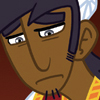

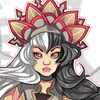







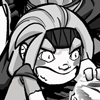


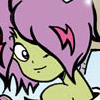



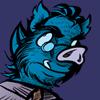
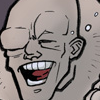











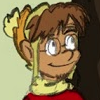



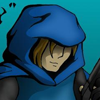
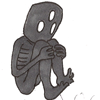





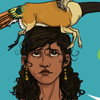





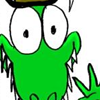


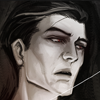
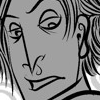




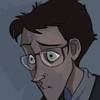














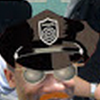


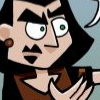


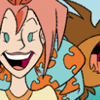
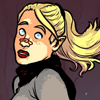







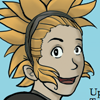











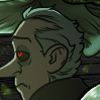


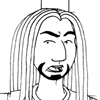


Thank you for the fair review of our comic. I think 4 out of 5 stars is just right at the moment since the story is not yet terribly original. But the story is just getting started and at the end of the next chapter, everything that has happened so far will be seen in a completely different light. Our readers can expect several unexpected plot twists and exciting action sequences in the next chapters of Gaia.
You’re not the first reader who has criticized the short history lesson at the beginning of the second chapter. It’s probably not the best way to convey background information, but I decided to do it this way to answer many possible reader questions about the setting such as “Why are there only humans?” or “What is the meaning of the phrase ‘Go jump into the Void!’?” at once.
Thanks for dropping by! Yup, it is pretty early in the story, but I’m still interested to see where the comic is going. 🙂
Personally, I figure if it’s not going to come into play in the story, you might as well consign it to a separate tab – that’s the virtue of the Internet. Otherwise, the best approach is to try to make sure the audience has some sense of what’s going on without resorting to exposition much if at all.
I guess in case of exposition, a comic should follow the way movies tell their exposition: Offering small trickles of it every now and then in such a natural way that the reader doesn’t even notice that he’s taking a history lesson. The “camping in the ruins”-scenario could work well in a comic, as long as the exposition isn’t the main reason they’re camping there. You can easily hide exposition in scenes which are primarily there for either character development, developing the proper atmosphere, or both.
…or thats how it could be done without some disembodied narrator in my opinion.
A excellent review as usual. I still take notes on your review style. I was meaning to tell you that really like your web page template it’s a solid 9.5! The best web comic review one by far.
Thank you!